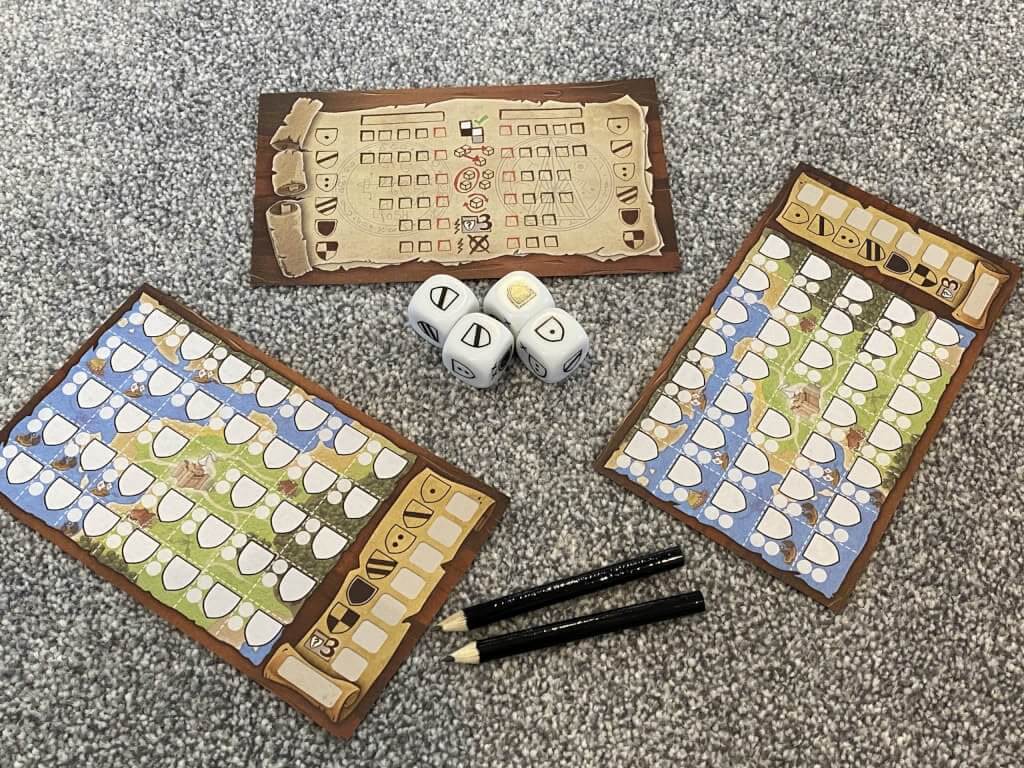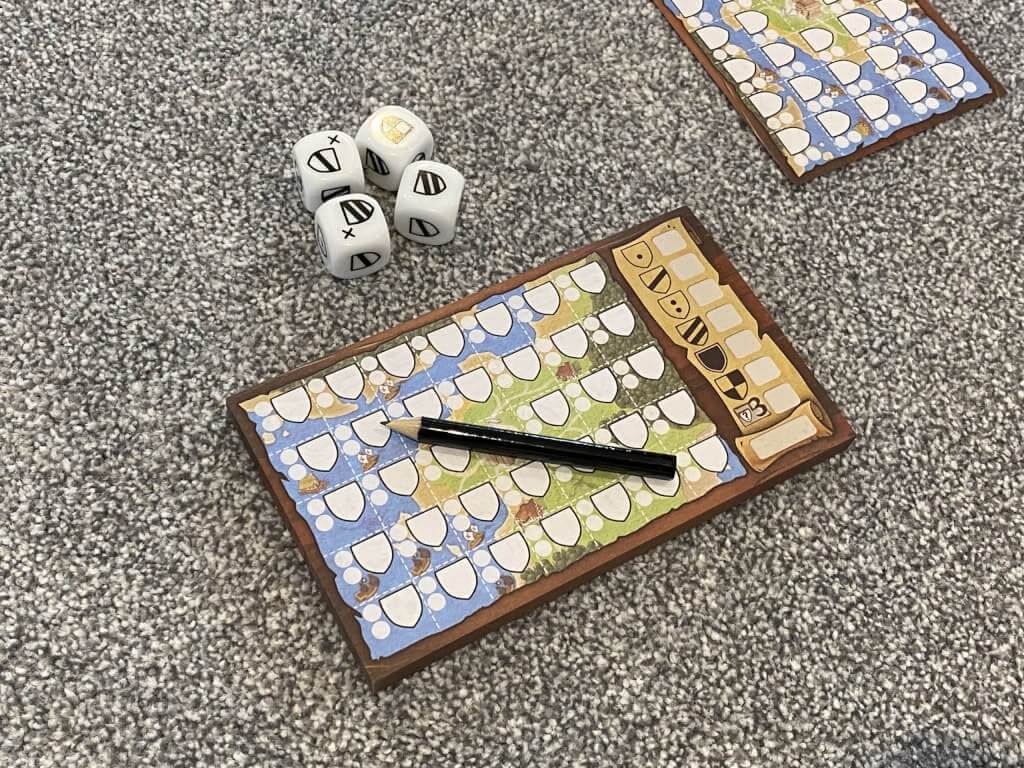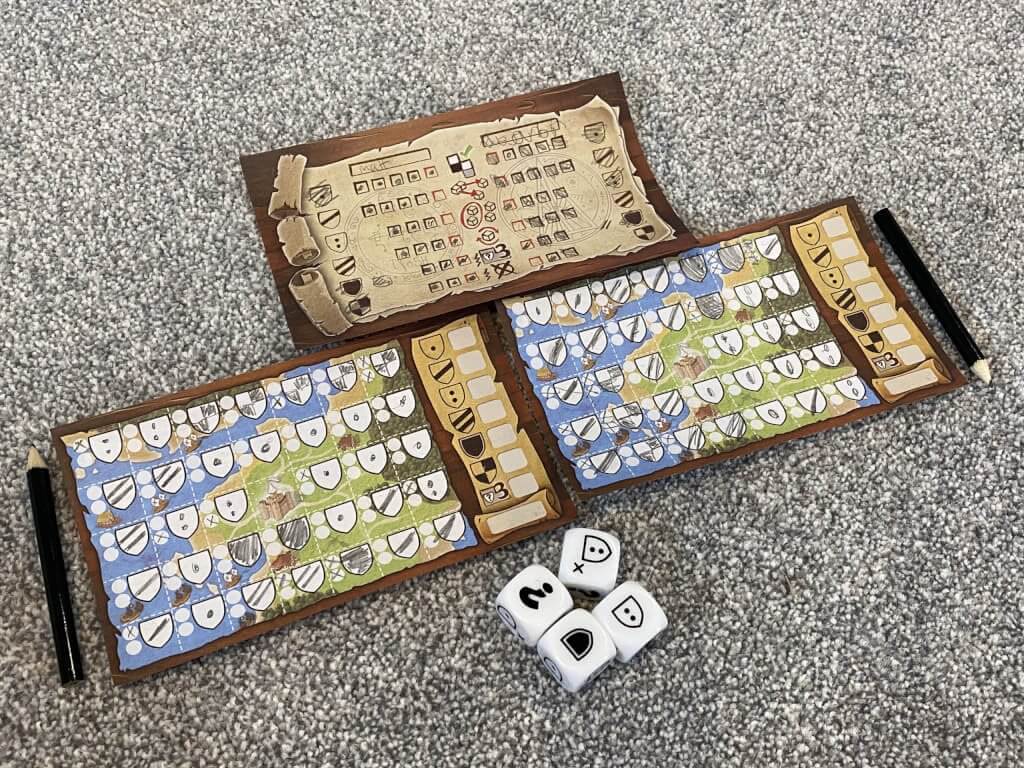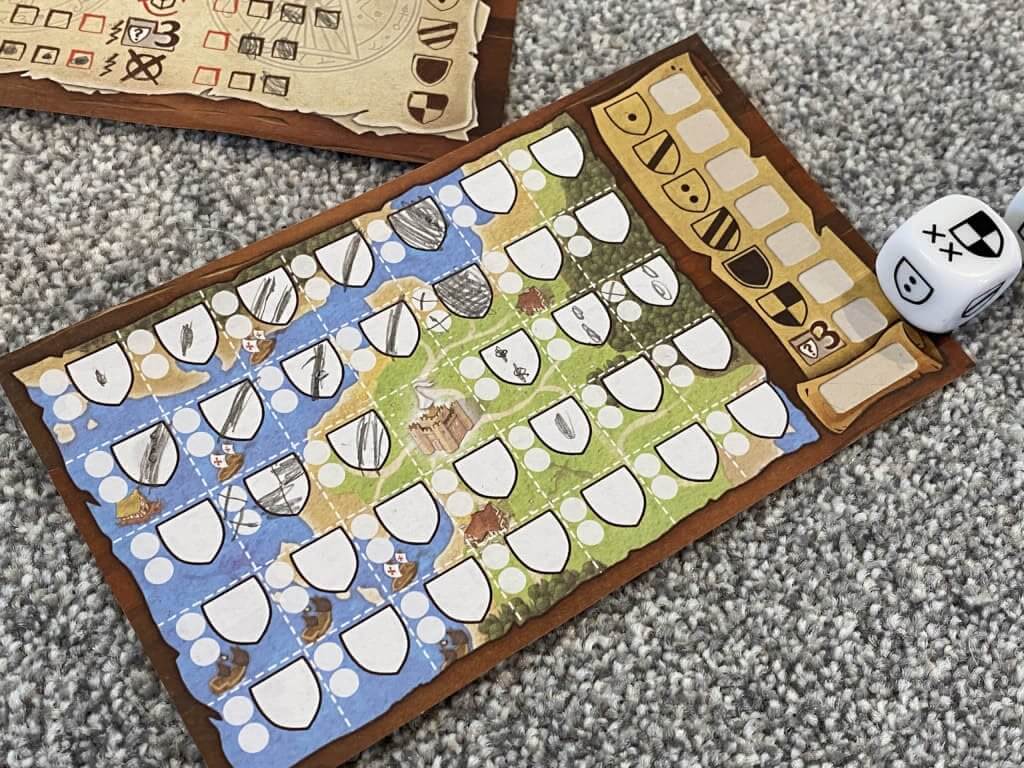Kingdomino Duel is a surprising roll-and-write that is quite different to its namesake
When I opened the sturdy, magnetised box of KingDomino Duel, I was expecting something that at least vaguely resembled the original game. What I got, however, was something that looked entirely different to me, to the extent that aside from the artwork, I couldn’t see how the games might be related at all.
This is because the small box, which is ideal for travel (not that we can do much of that at the time of writing) features little more than four dice, a large pad of score sheets and a couple of pencils. The instruction manual is more of a brief pamphlet, which keeps with how KingDomino Duel feels even more slimmed down than the original game.
The key mechanic in KingDomino Duel is to roll the dice and then draft them to form a domino — imagining that when placed side by side, the two dice show the two different sections of a (King)domino. Each face features some combination of shields and potentially stars, with the shields representing houses and the stars the nobles that occupy them.

Before actually doing any rolling, the players will each tear off a sheet from the pad (and my first complaint is that for a two-player game, there really should have been two wipe-clean boards) to form their kingdom. They’ll also tear a third sheet off and flip it over (or use an old sheet) to mark each player’s progress against a number of sub-objectives that I’ll explain later.
The front side of each sheet simply shows a grid of spaces, each of which has the imprint of a shield on it, as well as a couple of spaces where nobles might be marked. Beginning with the only space that is already filled in (the centre) the players will colour these spaces in depending on the shields that make up their domino-die.
Gameplay is very simple, and the first player rolls the four dice and then drafts one. The second player then drafts both of their dice, and then the first player takes whatever die remains. The players then have a domino of two sides each, and they simply choose where on their sheet the domino will be marked, and do so accordingly. It goes without saying, but for clarity, the spaces must be orthogonally adjacent, much like a proper domino would be.

That is, of course, unless a special power is used. Remember I mentioned that a third sheet would be placed face down? Well on the back of each sheet is a track for each player, in line with each kind of shield crest. Complete the requisite number of shield placements (based on the tracks) and you’ll unlock an ability — some of which are immediate, and others that can be used any time (such as being able to use your dice as two entirely separate placements, or to draft two dominoes as soon as you’ve rolled them).
The objective of the game is to score the most points as a consequence of the classic KingDomino method of scoring – the number of nobles in an area of matching shields multiplied by the number of shields in that area. For example, two nobles in a four shield area would score two multiplied by four, for eight points. The game ends when either or both grids are full, or when neither player can play another full domino.
My view on KingDomino Duel was a bit dim to begin with, simply because I wanted there to be more of the infectious colour and excitement that the original KingDomino and its sequel, QueenDomino both featured. KingDomino Duel is much more sombre, and I am disappointed about the lack of permanent score sheets (of which there would only need to be one for each player, plus a third for the special ability track).

With all that said, the game really grew on me quite quickly. I’ve played with my wife and with my eldest child a number of times now, and much as we found with the original KingDomino, KingDomino Duel is a game that features more strategy and depth than you might expect, if you simply passed it in the store.
Firstly, there’s the obvious — domino placement. Like all of the games in this series, KingDomino Duel requires players to think carefully about where to place their domino’s to ensure maximum points. The use of dice and the inclusion of a drafting feature is really neat, and whilst it feels very different to the “bigger” versions of this game, it achieves more or less exactly the same series of decisions and consequences.
Then, new to the series without looking to expansions, is the introduction of powerful abilities. Whilst being able to place a domino in the “wrong” place, or change a shield face (among others) are all-powerful, because each one can only be accessed once in a game, the power level is balanced. This is especially true since both players are likely to achieve almost all of the power-ups if they try, albeit at very different times in the game.

I have to balance the slightly underwhelming production when considering my verdict, but considering that gameplay will always be the decisive factor in whether I recommend a game or not, I must say that KingDomino Duel does not disappoint. Indeed, if you have the chance to play two-player games regularly, and in particular if you expect to do so whilst travelling in the future, then KingDomino Duel is a game that you must add to your collection.
You can purchase KingDomino Duel on Amazon.
Love both video games and board games? Here’s our list of some fantastic crossover games.
Comments are closed.